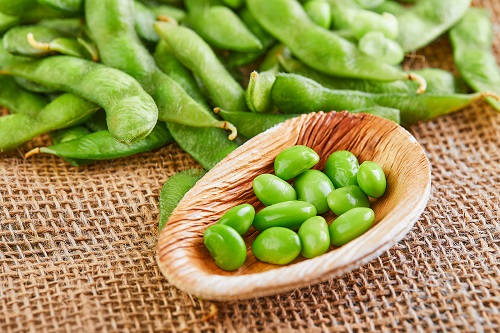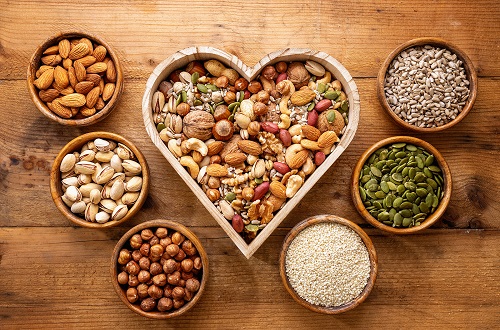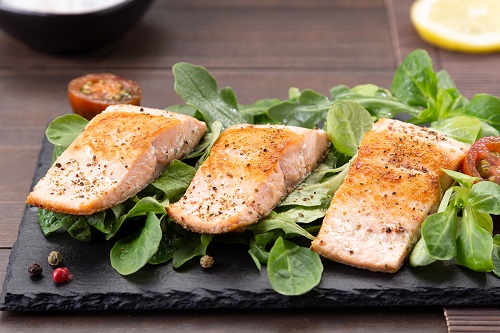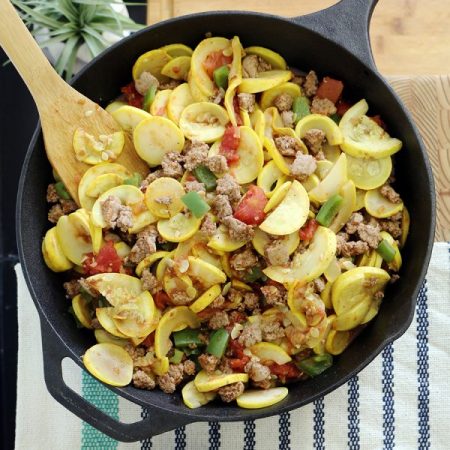Growing up, you may have heard that we need protein to build strong muscles. Well, that’s true! But there’s so much more to foods that contain protein, and we’ll tell you why.
Each month this year, we are featuring a different food group or sub-group as part of our Food Talk Features… Series. Last month, we gushed over the Grains food group. Grains are important because they provide our bodies with energy and important nutrients like magnesium and selenium. Check out our Grains blog to learn more!
This month, we’re excited to help you pick out some protein-packed foods. This food group is an important one, and we’re excited to teach you about it!

What are the benefits of protein foods?
Protein is a nutrient that provides calories (energy). It is in many different foods. We call foods that contain protein “protein foods.” There are many benefits to eating protein foods that go beyond the actual protein content. Many of these foods are rich sources of vitamins, minerals, and some also have healthy fats.
Protein foods include:
- Seafood
- Meat, poultry, and eggs
- Beans, peas, and lentils (also veggies! Check out our blog on Beans and Lentils and Starchy Vegetables to read about this unique group of foods.)
- Nuts and seeds
- Soy products like tofu, tempeh, and soybeans
Foods in other food groups, like dairy products, also have some protein. You can read more about these foods in our Dairy blog. [1]
Protein is needed for strong bones and muscles. It is also helpful for healthy skin, hair, and blood cells. Getting enough protein every day keeps our bodies working properly! Protein helps keep us feeling fuller for longer, so it’s a great addition to any meal or snack. [2]
The nutrients found in protein foods are all different. Some important ones include iron, zinc, vitamin B12, and vitamin E.
- Iron is important to prevent anemia. Anemia is when the body does not have enough iron to carry oxygen to the body. [3]
- Zinc is necessary for a healthy immune system. [1]
- Vitamin B12 is found naturally in animal foods. It is needed for healthy blood cells, nerve cells, and brain function. If you do not eat meat, be sure to talk with your doctor about ways to get enough vitamin B12. [4]
- Vitamin E is found mostly in plant fats like those in nuts and seeds. This vitamin is helpful in fighting against damage from the sun and pollutants in the air. It is also needed for a strong immune system. [5]

How much do I need?
Protein foods are measured in ounce equivalents. An ounce equivalent is how proteins are measured based on their weight. When available, choose lean meat and poultry, which contain less saturated fat. For seafood, choose options with more healthy fats (called omega-3 fatty acids) and less methylmercury. [1]
The amount of protein foods we need depends on many factors. In general, we need more protein as we age to build and maintain our strength. We can follow these general guidelines:
- Toddlers: 2 ounce-equivalents
- Children (2-8 years old): 2-5 ½ ounce-equivalents
- Girls (9-18 years old): 4-6 ½ ounce-equivalents
- Boys (9-18 years old): 5-7 ounce-equivalents
- Women (19-60+ years old): 5-6 ½ ounce-equivalents
- Men (19-60+ years old): 5 ½-7 ounce-equivalents
Some examples of 1-ounce equivalent protein foods include:
- 1 ounce of meat, poultry, fish, or shellfish
- 1 slice of sandwich deli meat (learn more about this option in our Deli Meat Debate blog)
- 1 egg
- ¼ cup cooked beans, peas, or lentils
- ¼ cup tofu or soybeans
- 1 tablespoon nut butter
- ½ ounce nuts (12 almonds, 24 pistachios, or 7 walnut halves) and seeds
Be aware that we usually eat more than 1 ounce of protein foods at a time. The portion we recommend for meat, poultry, and seafood is the size of a deck of cards. This serving size is about 3 ounces by itself! Understanding protein portions will make sure you leave plenty of space on your plate for fruits, vegetables, and a small portion of grains, too.

Power up with these protein-packed options!
The Dietary Guidelines for Americans recommends that we eat a variety of protein foods. Aim for a combination of lean meats, fatty fish, and plant-based proteins (nuts, seeds, and soy products). This variety will keep saturated fat low and healthy oils and fiber high.
Our Food Talk website has so many different protein options. Test out some of these recipes for a protein punch in your next meal:
- Eggs, anyone? Our Apple & Veggie Omelet, Breakfast Tacos, Oven Spinach Frittata, and Nopales Scramble are delicious breakfast options.
- If fresh fish is your thing, try this Summer Catfish in a Packet or Baked Fish and Veggies. These are white fish, which are low in fat. For fish with high amounts of healthy omega-3 fatty acids, try canned or fresh salmon, tuna, or mackerel.
- Plant-based proteins are equally yummy options! Swap out your usual burger with this Black Bean and Sweet Potato Veggie Burger. Let black beans take the stage with our Black Bean and Quinoa Bowl. Give sweet potatoes some love with our Stuffed Sweet Potatoes Three Ways (vegetarian and meat versions included!).
- You might love these other plant protein recipes: Curry Chickpea Sandwich, Crockpot Vegetable Lentil Stew, Slow Cooker Rice and Peas, and 3-Bean Slow-Cooker Chilis!
- Winner, winner, chicken dinner! Cook up yummy chicken recipes like Lemon Pepper Chicken, Chicken Chili with White Beans, Warm Chicken with Pasta and Vegetables, and Slow-Cooker Chicken and Dumplings.
- Turkey is a tasty low-fat meat option. Give our Turkey Meatloaf, Skillet Spaghetti, or Turkey and Squash Skillet a try!
Here at UGA SNAP-Ed, we are big fans of protein! It keeps us feeling energized and strong, and there are so many yummy foods that contain protein. What are some of your favorite protein foods?
Next month, we’ll be sharing some of our favorite fall and winter season fruits. Stay tuned!
Written by Melanie Ng, Ph.D. Candidate | Edited by Leslie Davis, MS, RD, LD, CDCES and the Nutrition Education Team
Posted: August 9, 2021
[2] EatRight—How much protein should I eat?
